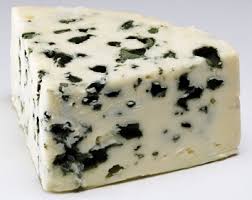
Just having spent quite a long time on the other side of the 'big pond', I actually started to appreciate again both the quality - the quantity and particularly the prices of our 'European' cheeses on my return.
Although my personal favourites are ' pâte molle' (soft - such as brie or camembert) cheese should always be eaten at the end of a meal, and in the order of 'weaker' to 'stronger' tasting (here are a few facts, in French, but you can use the translator at the top of this blog):
Nos Chefs
Commencez toujours la dégustation du fromage le moins fort au fromage le plus fort: chèvre frais -salers-morbier-ossau iraty- chèvre fermier-comté-rocamadour-cosso brebis-bethmale-perail-fileta-roquefort. Connaissez-vous l'histoire du ROQUEFORT ? la légende raconte qu'un berger plus intéressé par les femmes que par son troupeau oublia son repas de pain et de fromage frais de brebis dans des grottes pour suivre sa belle. A son retour, la moisissure Penicillium roqueforti avait métamorphosée son casse-coûte .... Le Roquefort était né.
European cheeses are surrounded by myths and stories of their discoveries, in particular the probably most expensive one going, 'Roquefort' Blue which is actually green! Here is a little bit about it with thanks to:
http://www.francemonthly.com/n/0705/
 onjour! onjour!
There are many must-see magical places tucked away in France. Some of them were still hard to access as recently as a few years ago, such as the Aveyron region, where the most famous cheese of France is made. However, with the building of the tallest bridge in the world, the doors to this equally beautiful and wild area are now swung open. This journey takes us across the Millau Viaduct, for a gastronomic stop in Roquefort-sur-Soulzon, the tiny village whose name evokes delight in the mind of the finest gourmets. But before continuing, please remember that you can access and read all the newsletters already published athttp://www.francemonthly.com/ |
 |
 |
| The Legend of Roquefort |
Legend tells the wonderful story of a young shepherd who was keeping his sheep at the foot of the Massif de Combalou. As he was resting in a cave, just about to savor a delicious piece of rye bread with some sheep cheese on top,
 |  |
| | Caves of Roquefort-sur-Soulzon (Click photo to enlarge)
|
he saw a charming shepherdess go by. He quickly stuck his meal in a corner of the cave to run after the pretty woman, and forgot all about it. The young birdbrain came across his bread a couple of lunar months later. He noticed that as it had molded, the bread had turned blue and the piece of sheep cheese as well had been covered with bluish-green veins. As he was starving, he sank his teeth into it despite the strong odor the cheese was releasing and, mind you, found the delicacy much to his liking. Thus, Penicillium roqueforti came to be, born of a mysterious alchemy between the humidity and natural ventilation of a cave on a piece of dry bread. As if by magic, Roquefort cheese came to life. |
 |
| Roquefort, King of Cheeses |
As early as 3500 B.C., Roquefort’s predecessor was already very much appreciated. At the beginning of our era, Romans made a big thing of this delicately flavored treat, although it was not yet called Roquefort. It wasn’t until about the year 400, a dark period in history when pillagers were spreading terror in the countryside, that a small town nestled at the foot of the mountain Combalou set up defensive fortifications. Originally called "Roca Forta" ("Strong Fortress" in Latin), the small village already known for its precious bluish cheese, was later rebaptized "Roquefort-sur-Soulzon". Over the centuries, the cheese captivated the greatest men of the kingdom of France and Navarre: Charlemagne, François I, Louis XIV all relished it, while famous artists and writers such as Rabelais continuously praised its qualities. Diderot stated that "Roquefort cheese is indisputably the finest cheese in Europe". Brillat-Savarin, a member of the Constituent Assembly during the French Revolution and a fine gourmet himself, stated that a "dinner without Roquefort is like a beautiful woman missing an eye", whereas Casanova proclaimed without hesitation that Roquefort "had the power to restore love and bring to maturity a budding love". Roquefort is indisputably the King of Cheeses.
In any case, a certain Général de Gaulle once asked the question ' how can you govern a country which has more than 3,000 types of cheeses.....' |

 le port de Marseillan (Photo credit: cagouille05)
le port de Marseillan (Photo credit: cagouille05)








